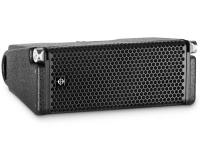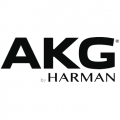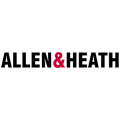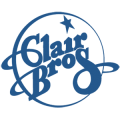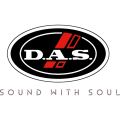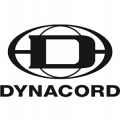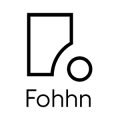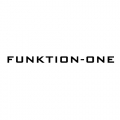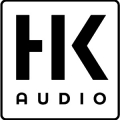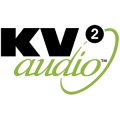ABOUT THE PRODUCT
ABOUT THE MANUFACTURER
GLOSSARY
TiRAY
2-way full range line array, 300 W, 2x5" ultra low distortion cone drivers + 5" HF neodymium planar wave driver
The TiRAY is an ultra compact, passive two-way full range line array module, designed for small venues where high fidelity sound and outstanding intelligibility are required. The system contains two 5" ultra low distortion cone speakers and a 5" neodymium planar wave driver.
TiRAY is CODA Audio?s pocket rocket line array: a remarkably small-footprint, super-light, two-way passive system which packs more of a punch than many competitors? more sizeable equivalents.
This is largely down to its two 5 ultra-low distortion cone speakers, and unique 5' neodymium planar wave driver, which gives it its power and versatility. Designed for touring and installations, these boxes are perfectly suited to music bars and clubs, theatres, ballrooms, and auditoriums, as well as sports centres and Houses of Worship.
TiRAY is the ultimate, easy-to-rig, plug and play system ? and it's very easily expandable. Up to 24 units can be flown or ground stacked, thanks to CODA's smart integrated rigging system, and a built-in passive crossover means multiple units can be driven by a single channel of CODA's proprietary LINUS5 or LINUS10 4-channel DSP amplifiers. Furthermore, the TiLOW bass extension works seamlessly with the main box, providing plenty of low-end reinforcement, which means extra flexibility for audio companies when working in larger venues.
TiRAY: Small. Powerful. Flexible.
Main Features
- Ultra compact size
- Unique 5'' neodymium planar wave driver
- Dual 5' ultra low distortion cone drivers
- Wide horizontal coverage of 100°
- Vertical curving 0° ? 12°
- Superior sound
- Full range capability
- Integrated rigging system for flown or ground stacked arrays
- Multiplex enclosure with Polyurea coating for extreme durability and water protection
- Low frequency extension with the TiLOW bass extension
- System integration with CODA LINUS amplifiers
TiLOW : Ultra Compact Bass Extension For TiRAY
Ultra compact 12? bass extension, Extended frequency range 44 - 500 Hz (-6 dB)
TiLOW is the super-compact bass extension for the TiRAY line array, which increases long throw capability of the TiRAY system, and enhances its LF headroom. First and foremost, TiLOW isn?t a sub: it It does, however, operate between 44 and 200 Hz, which overlaps both the low end of TiRAY and CODA's subwoofers, providing more energy and control in the lower range of the system thanks to its dual 12-inch drivers and compact, vented exclosure, which provides a signature low-end punch to your sound.
TiLOW is very compact and versatile: fly it on top of a TiRAY array at a show to increase the long throw capacity of the system; fly it beside TiRAY to optimise horizontal directivity; set it in a TiRAY array between the cabinets to help avoid balcony reflections in a theatre or ground-stack it with TiRAY as a compact and powerful solution for smaller venues.
System Solution
The TiLOW is designed to work exclusively with dedicated CODA Audio LINUS5-C or LINUS10-C amplifiers as an integrated solution for DSP, amplification, network remote control and diagnostic. The integrated solution ensures optimal performance and protection.
Main Features
- Ultra compact 12'' bass extension
- Extended frequency range 44 ? 500 Hz (-6 dB)
- Flyable or ground stackable in cardio or omni configurations
- Rigging is compatible with TiRAY
- System integration with CODA Audio amplifier racks
Applications
- TiLOW flown on the top of TiRAY array (40 - 400 Hz) increases the array length and enlarges the system long throw capability
- TiLOW flown beside the TiRAY array (40 - 180 Hz) optimises the system horizontal directivity
- TiLOW in array between TiRAY cabinets (40 - 400 Hz) avoids balcony reflections
- TiLOW ground-stack with TiRAY (40 - 400 Hz) compact and powerful solution for smaller venues
- Primarily designed for integration into the TiRAY line arrays, the TiLOW is also suited for a variety of applications in touring and installations where ultra compact size, high precision, deep bass with directivity control is needed.
Application Advantages
- Increases the long throw capability of TiRAY
- Enhances the systems low frequency headroom
- Overlaps both the low range of TiRAY and the ground subwoofers reducing the need for additional subs
- Provides 12'' sonic signature
Options
Standard RAL colours and weather protection options are available on request. The integrated rigging system allows quick and easy flying or ground stacking.
Professional used lighting equipment.| Professional second hand lighting equipment.| Professional pre owned lighting equipment.
Professional used audio equipment.| Professional second hand audio equipment.| Professional pre owned audio equipment.
Second hand audio gear. | Second hand lighting.
Pro audio equipment, second hand amplifiers, DJ, second hand sound systems, second hand Microphones, second hand Media Players.
Outdoor & Indoor LED screens for sale, LED mobile truck.
Light trussing, Gebrauchte Veranstaltungstechnik, used stage equipment Stage & Theatre lighting products.
Used CODA Audio
CODA Audio is a leading designer and manufacturer of high quality pro-audio loudspeaker systems. Core to our products are a number of unique patented driver technology designs which provide outstanding dynamic results as well as improved precision and reliability over conventional components.
To ensure the highest quality and control over our products we have our own manufacturing facility in Europe which produces all of the driver and cabinet components. Further benefits to this approach include substantial reductions in cost and quicker times to market for new products.
We have a wide product range offering high quality solutions to satisfy the most discerning and complex professional sound reinforcement applications, ranging from portable to installation to touring.
CODA Audio is represented via a global network of experienced and technically qualified international distributors.
Professional used lighting equipment.| Professional second hand lighting equipment.| Professional pre owned lighting equipment.
Professional used audio equipment.| Professional second hand audio equipment.| Professional pre owned audio equipment.
Second hand audio gear. | Second hand lighting.
Pro audio equipment, second hand amplifiers, DJ, second hand sound systems, second hand Microphones, second hand Media Players.
Outdoor & Indoor LED screens for sale, LED mobile truck.
Light trussing, Gebrauchte Veranstaltungstechnik, used stage equipment Stage & Theatre lighting products.
Active: Powered. An active crossover is electrically powered and divides the line-level signal prior to amplification. An active speaker includes an active crossover and built-in amplifier.
Actuality: Audio from an announcer speaking.
Amplifier: A component that increases the gain or level of an audio signal.
Balanced Input: A connection with three conductors: two identical signal conductors that are 180 degrees out of phase with each other, and one ground. This type of connection is very resistant to line noise.
Bandpass: A two-part filter that cuts both higher and lower frequencies around a center band. A bandpass enclosure cuts high frequencies by acoustic cancellation and low frequencies by natural physical limitations on bass response.
Bandwidth: In audio, the range of frequencies a device operates within. In video, the range of frequencies passed from the input to the output. Bandwidth can also refer to the transmission capacity of an electronic communications device or system the speed of data transfer,is very important when planning a meeting for the attendees to stay connected.
Bass: Low frequencies those below approximately 200 Hz.
Bi-Wiring: A method of connecting an amplifier or receiver to a speaker in which separate wires are run between the amp and the woofer and the amp and the tweeter.
Boost: To increase, make louder or brighter opposite of attenuate.
Bridging: Combining two channels of an amplifier to make one channel that more powerful. One channel amplifies the positive portion of an audio signal and the other channel amplifies the negative portion, which are then combined at the output.
CD: Compact Disc. Ubiquitous digital audio format. Uses 16-bit/44.1-kHz sampling rate PCM digital signal to encode roughly 74 or 80 minutes of two- channel, full-range audio onto a 5-inch disc.
CD-R: Recordable Compact Disc.
CD-RW: Rewritable Compact Disc.
Channel: In components and systems, a channel is a separate signal path. A four-channel amplifier has at least four separate inputs and four separate outputs.
Coloration: Any change in the character of sound (such as an overemphasis on certain tones) that reduces naturalness.
Crossover: A component that divides an audio signal into two or more ranges by frequency, sending, for example, low frequencies to one output and high frequencies to another. An active crossover is powered and divides the line-level audio signal prior to amplification. A passive crossover uses no external power supply and may be used either at line level or, more commonly, at speaker level to divide the signal after amplification and send the low frequencies to the woofer and the high frequencies to the tweeter.
Crossover Frequency: The frequency at which an audio signal is divided. 80 Hz is a typical subwoofer crossover point and is the recommended crossover point in theatrical and home THX systems. Frequencies below 80 Hz are sent to the subwoofer signals above 80 Hz are sent to the main speakers.
Cut: To reduce, lower opposite of boost.
Decibel (dB): A logarithmic measurement unit that describes a sound`s relative loudness, though it can also be used to describe the relative difference between two power levels. A decibel is one tenth of a Bel. In sound, decibels generally measure a scale from 0 (the threshold of hearing) to 120-140 dB (the threshold of pain). A 3dB difference equates to a doubling of power. A 10dB difference is required to double the subjective volume. A 1dB difference over a broad frequency range is noticeable to most people, while a 0.2dB difference can affect the subjective impression of a sound.
Delay: The time difference between a sonic event and its perception at the listening position (sound traveling through space is delayed according to the distance it travels). People perceive spaciousness by the delay between the arrival of direct and reflected sound (larger spaces cause longer delays.
Diaphragm: The part of a dynamic loudspeaker attached to the voice coil that produces sound. It usually has the shape of a cone or dome.
Diffusion: In audio, the scattering of sound waves, reducing the sense of localization. In video, the scattering of light waves, reducing hot spotting, as in a diffusion screen.
Digital Audio Server: Essentially a hard drive, a digital audio server stores compressed audio files (like MP3 or WMA). Most include the processing to make the files, and all have the ability to play them back.
Direct-Stream Digital: A format for encoding high-resolution audio signals. It uses a 1-bit encoder with a sampling rate of 2,822,400 samples per second (verses 44,100 for CD). Used to encode six high-resolution channels on SACD.
Dispersion: The spread of sound over a wide area.
Distortion: Any undesired change in an audio signal between input and the output.
DNR: Dynamic Noise Reduction. A signal-processing circuit that attempts to reduce the level of high-frequency noise. Unlike Dolby NR, DNR doesn't require preprocessing during recording.
Dolby B: A noise-reduction system that increases the level of high frequencies during recording and decreases them during playback.
Dolby C: An improvement on Dolby B that provides about twice as much noise reduction.
Dolby Digital: An encoding system that digitally compresses up to 5.1 discrete channels of audio (left front, center, right front, left surround, right surround, and LFE) into a single bitstream, which can be recorded onto a DVD, HDTV broadcast, or other form of digital media. When RF-modulated, it was included on some laser discs, which requires an RF-demodulator before the signal can be decoded. Five channels are full-range the .1 channel is a band-limited LFE track. A Dolby Digital processor (found in most new receivers, preamps, and some DVD players) can decode this signal back into the 5.1 separate channels. Most films since 1992`s Batman Returns have been recorded in a 5.1 digital format, though a number of films before that had 6-channel analog tracks that have been remastered into 5.1.
Dolby EX: An enhancement to Dolby Digital that adds a surround back channel to 5.1 soundtracks. The sixth channel is matrixed from the left and right surround channels. Often referred to as 6.1. Sometimes referred to as 7.1 if the system uses two surround back speakers, even though both speakers reproduce the same signal. Software is backwards-compatible with 5.1 systems, but requires an EX or 6.1 processor to obtain additional benefit.
Dolby Pro Logic: An enhancement of the Dolby Surround decoding process. Pro Logic decoders derive left, center, right, and a mono surround channel from two-channel Dolby Surround encoded material via matrix techniques.
Dolby Pro Logic II: An enhanced version of Pro Logic. Adds improved decoding for two-channel, non-encoded soundtracks and music.
Driver: A speaker without an enclosure also refers to the active element of a speaker system that creates compressions and rarefactions in the air.
DSP: Digital Signal Processing. Manipulating an audio signal digitally to create various possible effects at the output. Often refers to artificially generated surround effects derived from and applied to two-channel sources.
DTS: Digital Theater Systems. A digital sound recording format, originally developed for theatrical film soundtracks, starting with Jurassic Park. Records 5.1 discrete channels of audio onto a handful of laser discs, CDs, and DVDs. Requires a player with DTS output connected to a DTS processor.
DTS ES: An enhanced version of the 5.1 DTS system. Like Dolby's Surround EX, a sixth channel is added. In some cases (DTS ES Discrete), the sixth channel is discrete. Software is backwards-compatible with 5.1 systems, but requires an ES or 6.1 processor to obtain additional benefit. Neo: 6 is a subset of DTS ES that creates 6.1 from material with fewer original channels.
Dynamic Range: The difference between the lowest and the highest levels in audio, it&'s often expressed in decibels. In video, it's listed as the contrast ratio.
Professional used lighting equipment.| Professional second hand lighting equipment.| Professional pre owned lighting equipment.
Professional used audio equipment.| Professional second hand audio equipment.| Professional pre owned audio equipment.
Second hand audio gear. | Second hand lighting.
Pro audio equipment, second hand amplifiers, DJ, second hand sound systems, second hand Microphones, second hand Media Players.
Outdoor & Indoor LED screens for sale, LED mobile truck.
Light trussing, Gebrauchte Veranstaltungstechnik, used stage equipment Stage & Theatre lighting products.

